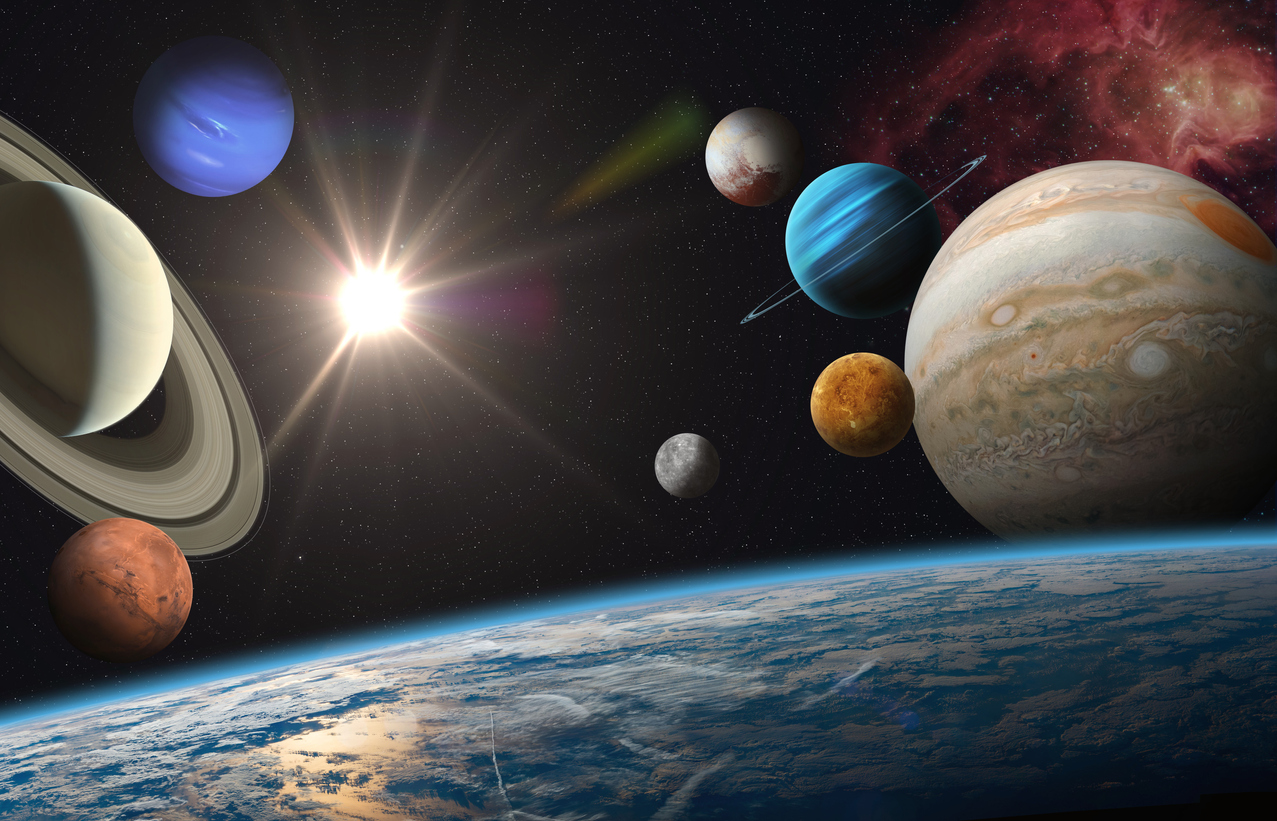
A University of Michigan astronomer and his team are suggesting a new way to expand the search for habitable planets that takes into account a zone not previously considered: the space between the star and what’s called soot-line in planet-forming disks.
Worlds that form in this region—a disk of dust rotating around a central star from which planets may be built—could have surfaces rich in volatile carbon compounds quite different from Earth’s. These planets would also be rich in organic carbon, but water poor, according to Ted Bergin, who led the study that included geochemists, planetary scientists, astrochemists and exoplanet experts.
When we search for Earth-like planets, we are particularly interested not only in bodies that look like ours, but also in those that are formed by processes similar to ours. Current models of rocky exoplanets are built using Earth-like atmospheric conditions and bulk composition, including the molecules essential for life that form from carbon-based building blocks and water. These models also focus on zones within planet-forming disks called ice lines, regions distant enough from the disk’s center star which mark where water or other key molecules transition from gas to solid phases.
Terrestrial worlds, like our planet, formed from solids. It has long been thought that Earth, which contains only approximately 0.1% water by mass, must have formed inside the water-ice line.
But that type of model may be too limited, Bergin said. To expand the search for habitable planets, Bergin and his research team suggest a new model that considers the soot line, a boundary closer to the solar system’s star. Between this boundary and the star, organic compounds in solids sublimate out of the solid into gas. Considering this region would also encompass rocky planets that may have more carbon than Earth has, raising questions about what that means for habitability in these kinds of planets.
The findings by the interdisciplinary research team are published in Astrophysical Journal Letters.
“It adds a new dimension in our search for habitability. It may be a negative dimension or it may be a positive dimension,” Bergin said. “It’s exciting because it leads to all kinds of endless possibilities.”
Just as Earth is poor in water, it is carbon poor as well, Bergin said. When forming, it likely received only 1 carbon atom per 100 available in planet-forming materials. Astronomers think the soot line explains why Earth has so little carbon. If Earth’s building blocks formed inside the soot line, the temperature and solar radiation blasted the materials that would form the young planet, turning carbon-rich compounds into gas and limiting carbon in the solids that are supplied to the forming Earth.
The team’s model theorizes about the formation of other planets born in between the soot line and water-ice lines.
Such a world does not appear to exist in our solar system, but our solar system is not representative of most known planetary systems around other stars, Bergin said. These other planetary systems look completely different. Their planets are closer to the sun and are much larger, ranging in size from what are called super-Earths to mini-Neptunes, he said.
“These are either big rocks or small gas giants—that’s the most common type of planetary system. So maybe, within all those other solar systems out in the Milky Way galaxy, there exists a population of bodies that we haven’t recognized before that have much more carbon in their interiors. What are the consequences of that?” Bergin said. “What this means for habitability needs to be explored.”
In their study, the team models what happens when a silicate-rich world with 0.1% and 1% carbon by mass and a variable water content forms in the soot line region. They found that such a planet would develop a methane-rich atmosphere through a process called outgassing. In this circumstance, organic compounds in a silicate-rich planet produce a methane-rich atmosphere.
The presence of methane provides a fertile environment for the generation of hazes through interactions with stellar photons. This is analogous to the generation of hazes from methane in Titan in our own solar system.
“Planets that are born within this region, which exists in every planet-forming disk system, will release more volatile carbon from their mantles,” Bergin said. “This could readily lead to the natural production of hazes. Such hazes have been observed in the atmospheres of exoplanets and have the potential to change the calculus for what we consider habitable worlds.”
Haze around a planet might be a signpost that the planet has volatile carbon in its mantle. And more carbon, the backbone of life, in the mantle of a planet means that the planet has a chance to be considered habitable—or at least deserves a second glance, Bergin said.
“If this is true, then there could be a common class of haze planets with abundant volatile carbon, and what that means for habitability needs to be explored,” he said. “But then there’s the other aspect: What if you have an Earth-sized world, where you have more carbon than Earth has? What does that mean for habitability, for life? We don’t know, and that’s exciting.”


Leave a Reply